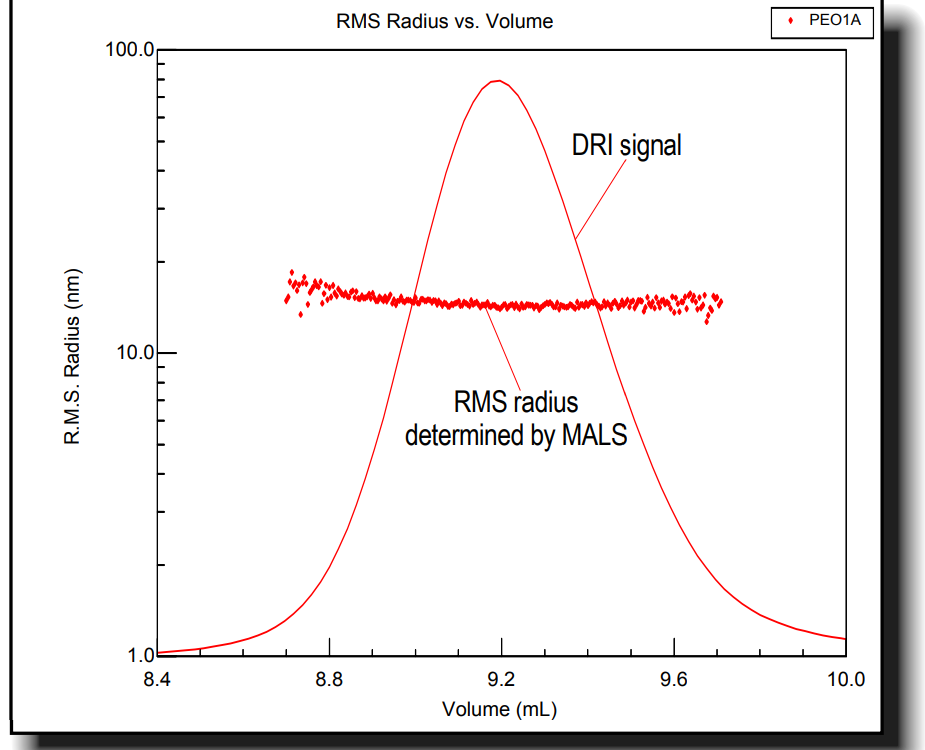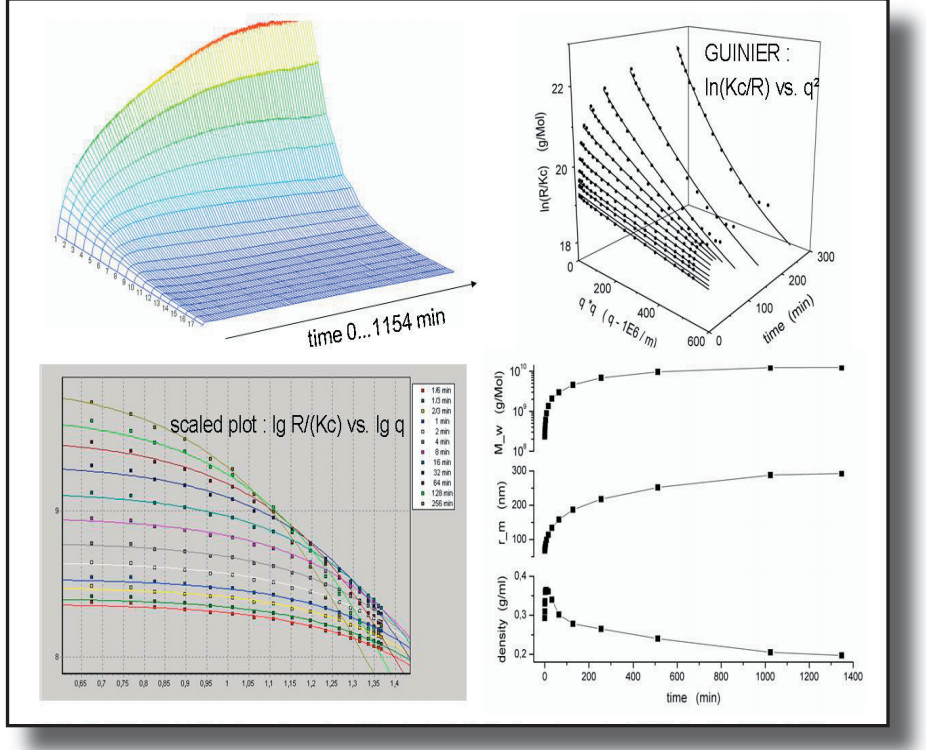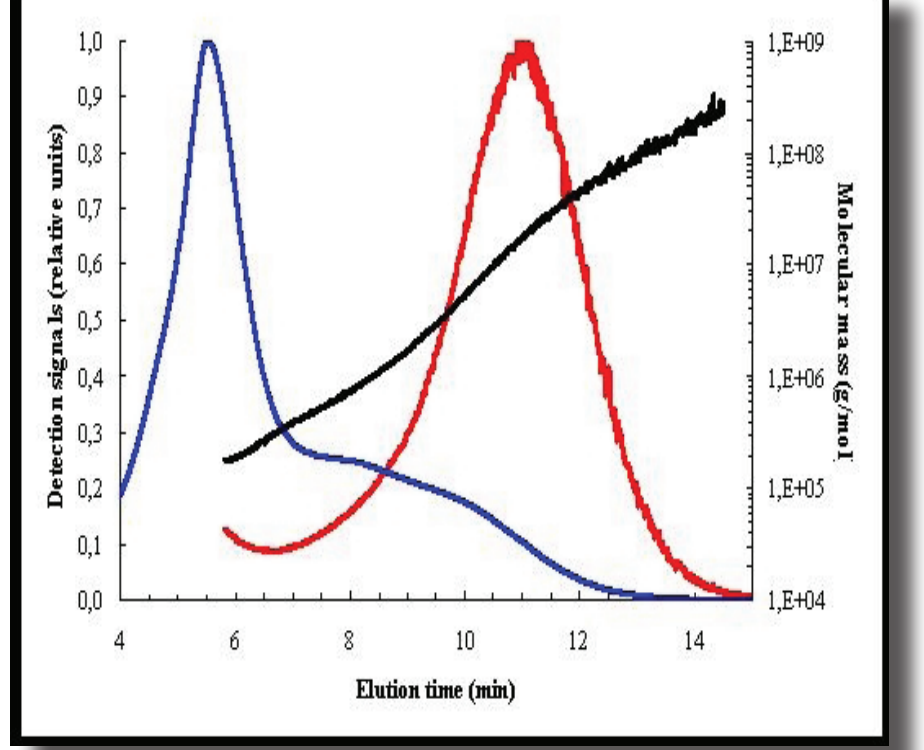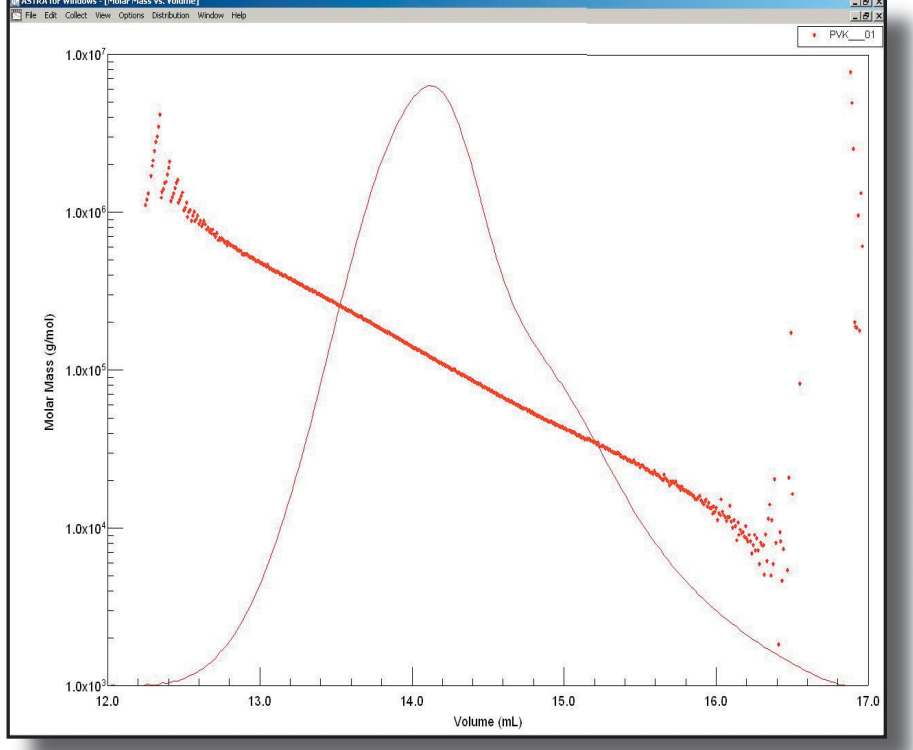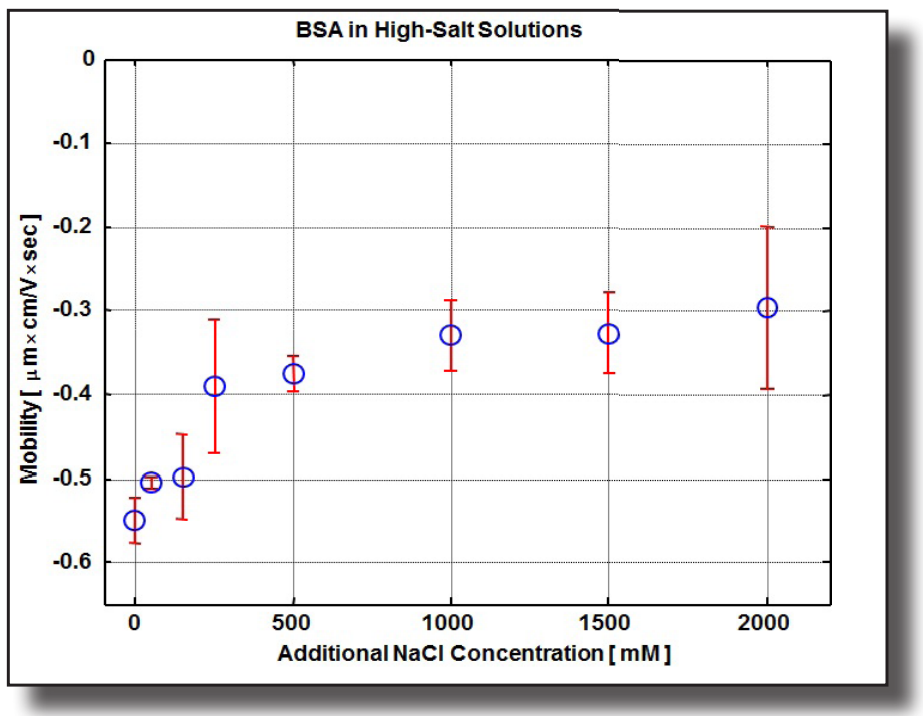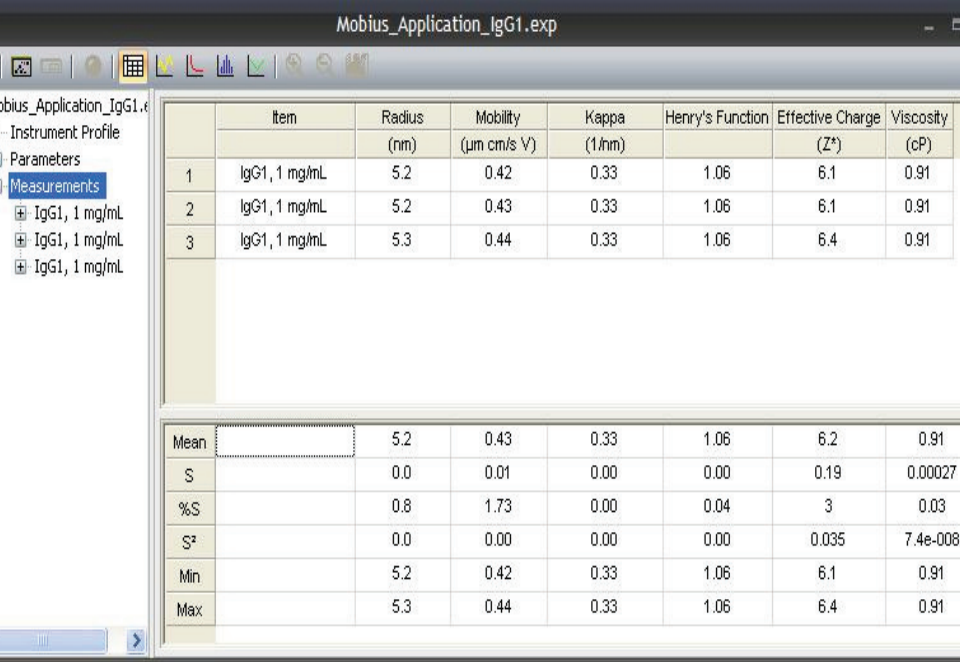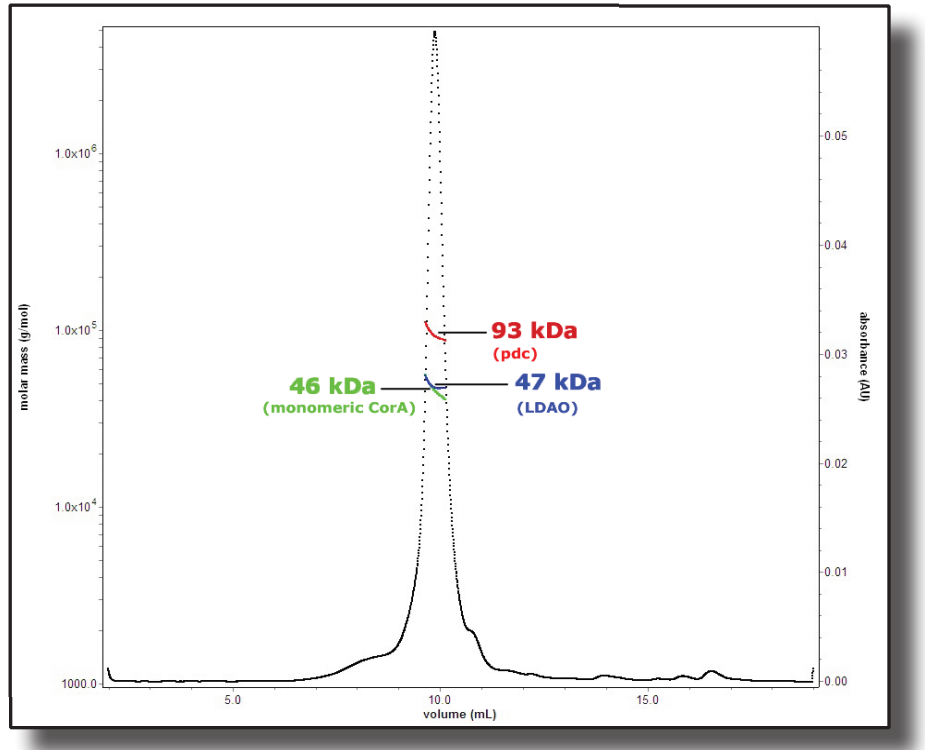Polypropylenes are a class of thermoplastic material that have no adequate standards, making their characterization with a DAWN essential. Learn more by reading our application note.
Since World War II, synthetic rubber has been growing in importance and ubiquity. As such products proliferate, it becomes even more important to be able to characterize them absolutely in order to predict their behavior. Learn more about characterizing synthetic rubber (a key reason for the existence of light scattering today) by reading our application note.
How well do our SEC-MALS instruments withstand the test of time? Learn more by reading our application note.
A polyethylene oxide (PEO) sample was characterized by size-exclusion chromatography (SEC) combined with DAWN, WyattQELS, and Optilab differential refractive index (DRI) detectors. Find our results by reading our application note.
While other instruments aggregate and disaggregate in time intervals that interfere with the time needed for measurement, Wyatt Technology’s MALS instruments solve this problem by simultaneously measuring the entire angular range. Learn more by reading our application note.
In this application note, we used an asymmetric field flow fractionation (AFFF) technique combined with multi angle light scattering (MALS). Learn more here.
The degradation of high molar mass polymers is known to occur in an extensional flow field, in which polymer chains elongate and become susceptible to mid-point scission. Read how we analyzed the polymer molar mass distribution here.
In this application note, we report the characterization of a telechelic polymer that consists of a polyacrylamide and a hydrophobic initiator “azo” derived of the 4,4’-Azobis(4-cyanopentanoic acid) modified with 12 or 16 carbons. Read the full note here.
For the application of polymer materials containing polyvinylcarbazole (PVK), the knowledge of its molecular weight and its molecular weight distribution (MWD) is of principal importance. For our application note, size-exclusion chromatography (SEC) was chosen for the analyses of the PVK samples. Learn more here.
At low ionic strengths, solute charge is predominant and causes repulsion through long range interactions. Under high ionic strength conditions, shielding of these ionic interactions by counter-ions is increased, and repulsion of solute molecules is generally decreased. Read our application note here.
A protein’s mobility is influenced by its environment and parameters such as the solution pH value, ionic strength and excipients—all of which can affect the measured mobility. The Mobius measures the mobility (electrophoretic) of macromolecules by means of Phase Analysis Light Scattering (PALS). Learn more by reading our application note.
When present in their native environment, transmembrane proteins are inserted via hydrophobic segments in a lipidic bilayer. In this application note, we describe a method to determine the quaternary structure of membrane proteins as well as to follow their retention during protein handling. Read more here.




